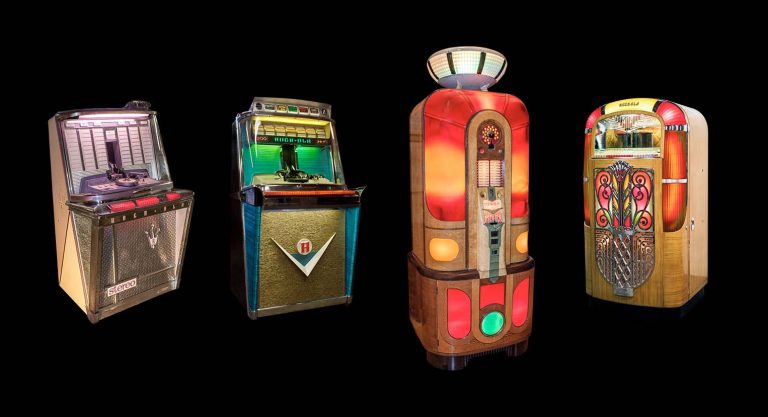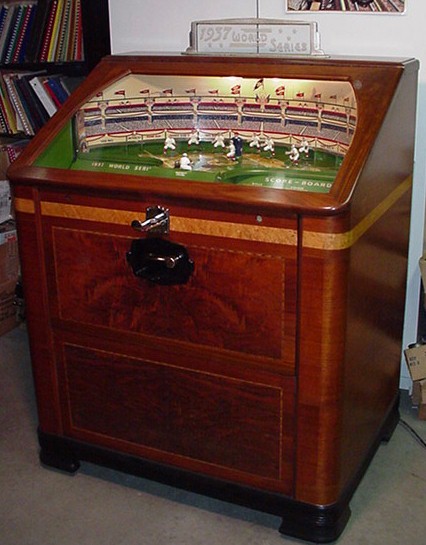The Trick Behind Colorful Catalin Plastics
Catalin Plastics

Ever see a terrific restoration and repair of a light-up jukebox only to have the whole image marred by terrible looking plastics? Well, here’s how to avoid that and make the catalin look like jewelry.
Start by cheerfully removing the plastics from your box. Wash each piece with soap and warm water to remove any surface debris or dirt. Then, in a large pail of water, cheerfully wet-sand the plastic in one direction — that’s important, one direction only — using only a name brand of “wet or dry” paper. Start with 400 grit sandpaper until the color of the plastic is uniform from top to bottom.
Next, wet-sand in the opposite direction — that’s right, opposite — using 600 grit paper. The idea here is to remove all the scratch marks you made with the 400 paper. Keep going using 800, 1000 and 1200 grit paper, each time going the opposite direction as before. Don’t move to the next grade of paper until you are sure all of the scratches of the previous grade have been removed. The last two steps can be done with either a polish wheel or by hand. Use a heavy duty rubbing compound and work the plastic to a satin finish. If you’re using a polish wheel make certain that the rpms are low, no more than 1,725.
If you like the results at this stage, stop. If you prefer high gloss, keep going and use a swirl-out product such as Evercote’s “Liquid Ebony.” This can also be done by the polish wheel or by hand. If you use the wheel, put on a new pad and don’t use the one contaminated with the heavy-duty polish. Be very careful not to catch the edge of the plastic with the wheel. It would be a shame to have that upper right 750 plastic fly right out of your hands.
Now, the final touch. Find a good silicone-based glazing polish, such as “Mirror Glaze,” or “Dyna Glaze.” Work this stuff to an ultra high polish. This will really clear things up.
A word of caution. When using silicone based polishes, dispose of the polish rags. If this stuff accidentally gets on a surface that you later want to paint it will cause severe fish-eye problems.
If anything makes a significant difference on a good restoration and repair, it’s polished plastics, but a lot of people don’t take that effective, final step. It’s hard work, but it’s worth it. And when you take a look at the final result it’ll make you… cheerful.






